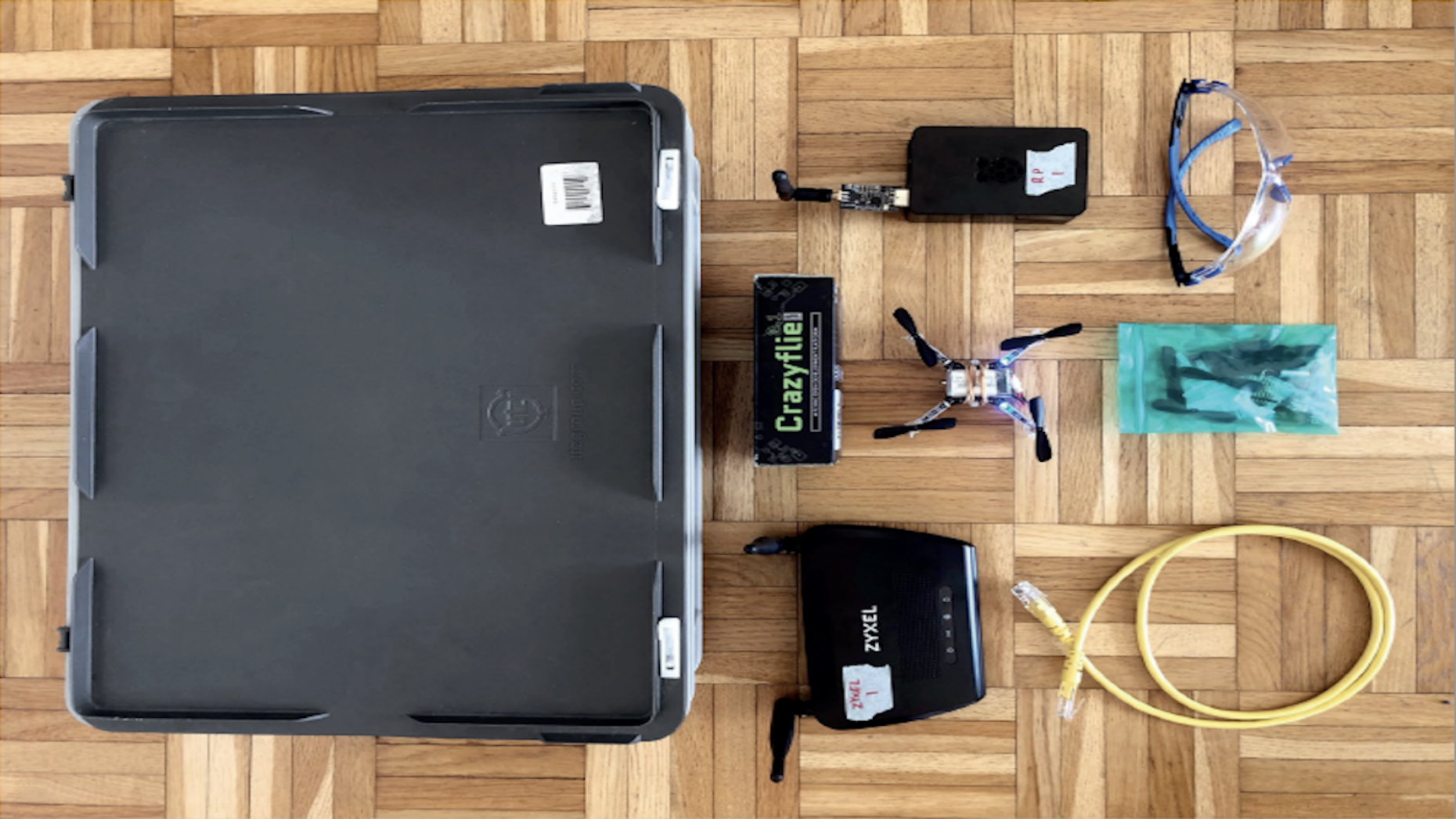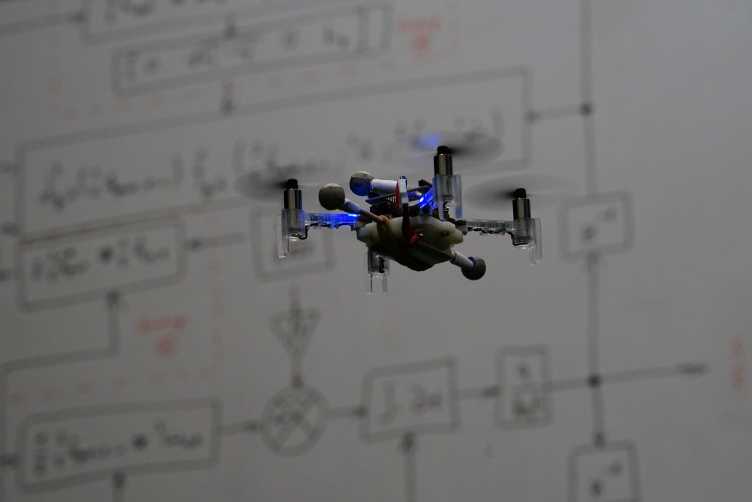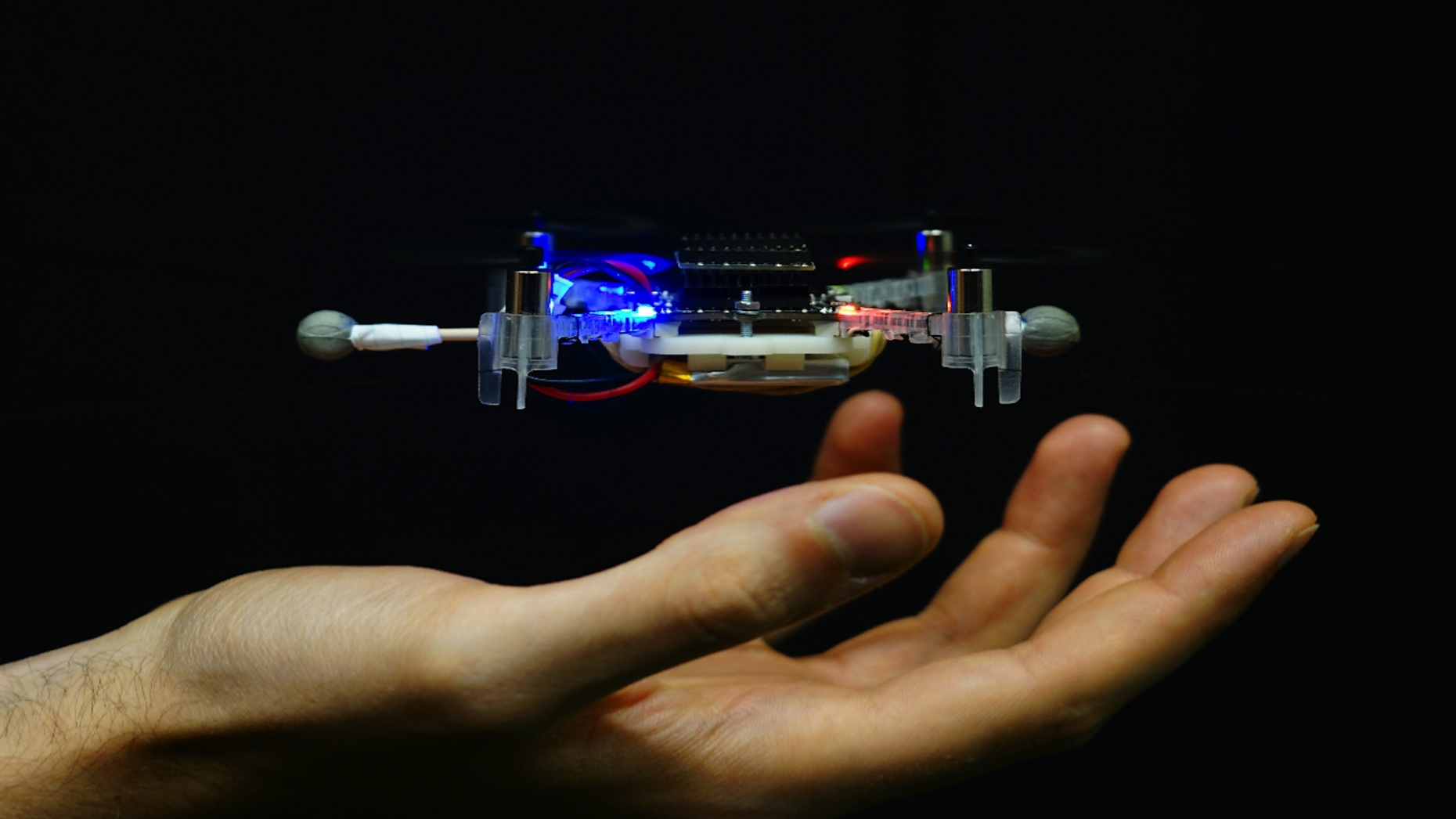Hands-on Quadcopter Education at all Levels
“Quad-rotors: Control and Estimation” is a project-based course for 5th and 6th semester bachelor students. It uses state-of-the-art nano quad-rotor technology to give students a hands-on lab experience. Through this course, the students gain knowledge about and understanding of the modelling and control theory for a quad-rotor application, and by applying the theory taught in the under-graduate control system classes students gain a variation in their engagement with these fundamental concepts and hence an opportunity for deeper learning.

Course structure before the pandemic
The students spend 6 afternoons completing a series of exercises covering 6 learning objectives which eventually lead up to the autonomous flight of a real-world nano quad-rotor using the students’ very own custom designed controllers. The course starts with learning how to derive the equations of motion for a quad-rotor through a combination of interactive learning activities encouraging active participation. The students then work in small teams to build their own simulation environment starting from a bare-bones template and applying theory from their control system classes to design and test a control algorithm. Once the students have a working control algorithm in simulation, they code and implement it on their own nano quad-rotor. The students then work concurrently with their simulated and real-world nano quad-rotor to understand how the theoretical underpinnings of their control algorithm can be adapted to the real-world complexities that are embodied by autonomous flight. Each exercise alternates between active problem solving within small teams and dynamic discussions as an entire class.

Working in small teams encourages the students to first think critically and attempt to solve the problems themselves, and it allows the teaching team to provide just-in-time learning guidance about technical and conceptual difficulties. Entire class discussions are then an opportunity for students to communicate their ideas and interpretations and receive detailed feedback from the teachers and other students. Students develop a sense of ownership for their quad-rotor’s behaviour because they developed the control algorithm from scratch, and during the last exercise students carry this through to a natural conclusion by proposing and implementing a custom project, which they then present to the entire class. This hands-on learning experience, however, relied on the availability of an expensive motion capture system in our laboratory used to provide position and orientation measurements of the quad-rotors.
Implementation during the time of distance learning
The pandemic changed all of that. Not only was it no longer possible to use the lab infrastructure, but it was also impossible for the students to work in teams. Instead of taking the easy route of suspending the class or providing remote demonstration sessions, we decided to redesign the class from the bottom up under the concept: if the students cannot come to the lab, the lab can come to their homes!
We adapted the hardware used on the quad-rotors, developed new software, and adopted online teaching tools to enable remote teamwork and supervision. Due to these developments, during the pandemic, the students were able to bring home packages containing a nano quad-rotor and our custom-developed open-source scalable plug-and-play software allowing them to safely perform experiments from essentially anywhere in the world, and without the need for expensive laboratory hardware that was necessary before the pandemic.
The response of the students to the changes in the course was enthusiastic. We conducted surveys through which we received many suggestions that helped us improve the course offering in subsequent semesters. To date we have offered the class in this new format to 78 students over 3 semesters, allowing them to experience the excitement of hands-on education and teamwork even during the pandemic.
The course offers professional skills development including teamwork experience, justifying engineering design choices, and conceiving of new ideas, which are transferrable skills to any future engineering project. The course highlights the challenges of putting theory from the control system classes into practice, which reinforces this theory through a variation of the students’ engagement with the theory and brings to light new aspects of engineering design on a relevant and interesting example. Even after the pandemic, we can use our new platform for hybrid laboratories where the students conduct additional experiments at home. Additionally, the software provides the framework to bring the system anywhere, enabling in-lecture demonstration, hands-on homework in larger classes, and outreach activities such as projects in high schools to attract young talent to engineering subjects. Our new platform is truly one-of-a-kind, in the sense that it is one of the only existing scalable, cost-efficient platforms which brings the experience of a hands-on lab to the homes of the students.

Course description
Overall concept of the course before the pandemic - during - after
The “Quad-rotors: Control and Estimation” course was first offered in 2017 as a way to impart practical knowledge and skills, and to encourage independent experimentation. The course was offered in-lab with a quad-rotor teaching platform consisting of a motion capture system and preconfigured laptops to provide a hands-on classroom experience. The class aims to help the students: (1) learn and understand the model, dynamics, and control of quad-rotors, (2) apply system and control theory from their courses to a real-world system, and (3) experience the complete chain of modelling, simulating, control design, implementing, and testing. The course gives students opportunities to make mistakes and observe the outcomes without damaging the system. Students learn from poor design choices, until they are rewarded with a working flight controller and a deeper understanding of the underlying theory. Working in teams teaches the students that complex tasks are better solved as a team, i.e., the team can achieve more than the sum of its parts. The course demonstrates the importance of control in real-world systems and can motivate students to pursue advanced control courses in their further studies.
Redesigning the software combined with the newest quad-rotor technology gave us the flexibility to send the lab to the students’ homes during the pandemic and provide the same hands-on experience as if the students were in the lab.
After the pandemic, we will use this quad-rotor platform to complement in-person teaching by allowing students to work with the quad-rotors outside of scheduled class times, which was not possible with the pre-pandemic setup. We also intend to demonstrate the possibilities of remote hands-on lab courses. Presenting this concept at conferences/outreach events has the potential to reshape the future of engineering hands-on lab courses. It provides an opportunity to offer a scalable remote lab without compromising on student learning experience and outcomes.

